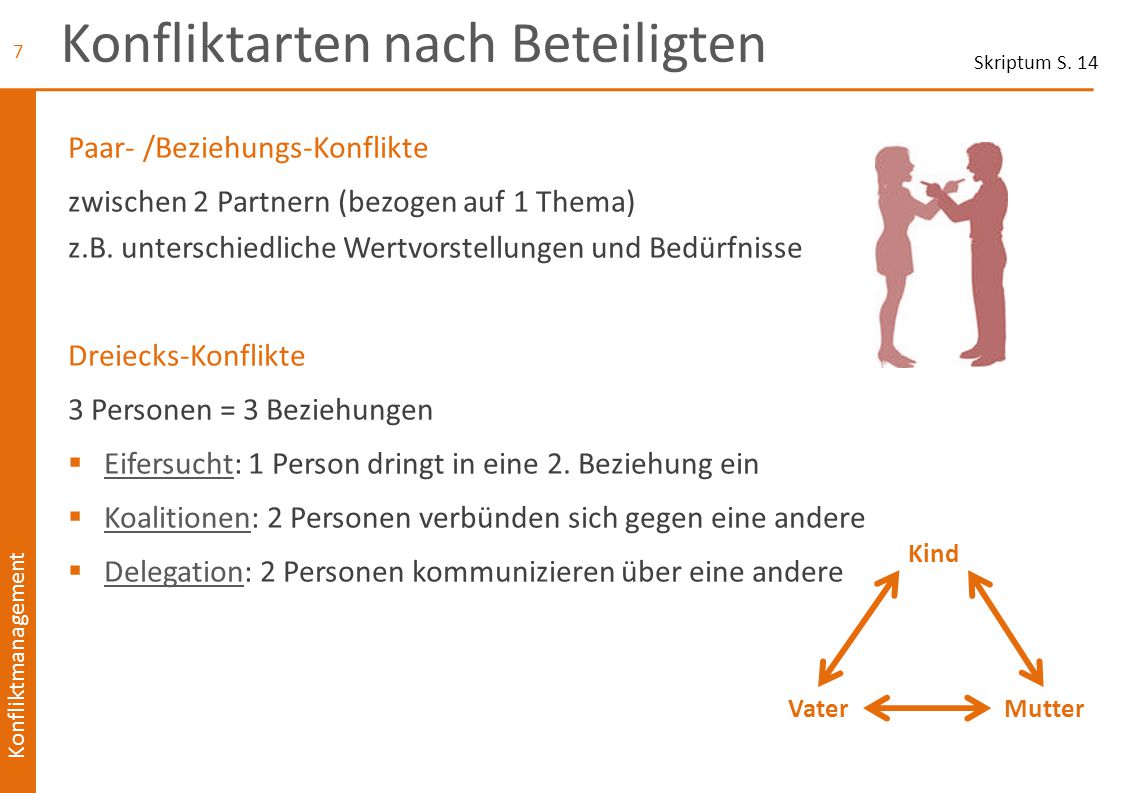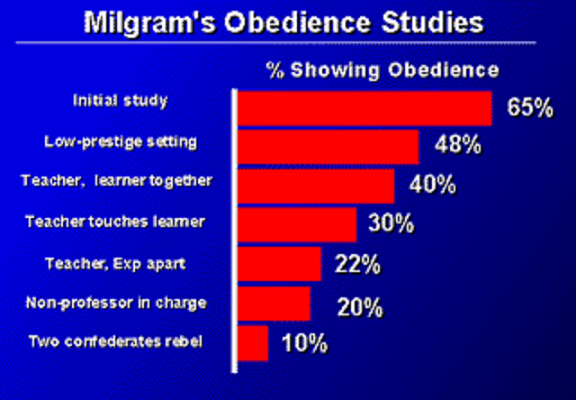The milgram experiment
Data: 2.03.2018 / Rating: 4.7 / Views: 799Gallery of Video:
Gallery of Images:
The milgram experiment
The Milgram experiment on obedience to authority figures was a series of notable experiments in social psychology experiments conducted by Yale University psychologist Stanley Milgram, which measured the willingness of study participants to obey an authority Before he started his experiment, Milgram had asked a number of professors and psychology students and clinical psychologists whether or not people would obey the commands of the experimenter, and they overwhelmingly said that people would not, that most of them would stop when the learner protested, and that very very few people would shock. This experiment, like the famous Milgram experiment in which participants were induced by the scientist in the white coat who was actually physically present to deliver shocks of increasing intensity, was in fact deceptive because no one is in the adjacent room. In some situations, people will go to the extreme in order to be obedient. Stanley Milgram studied whether people would still be The Milgram experiment, which was first conducted 1960s, has been repeated today and the results are exactly the same as the original. With Russ Kingston, Jack Brand, Craig Stoa. True story based on experiments conducted by Stanley Milgram at Yale University. In fact, Milgram was denied tenure at Harvard and kept from entering a number of academic institutions possibly because of negative perceptions associated with the experiment. But let's look a little closer at these results, let's look a little bit closer at the 65 number. Critique of the Milgram Experiment Ethics made experiments using deception illegal. The Stabley Milgram Experiment would never be allowed today. Milgrameksperimentet er et bermt psykologisk eksperiment, der blev startet i juli 1961 og publiceret i 1963 i Journal of Abnormal Social Psychology af socialpsykologen Stanley Milgram. The experiment requires that you continue). Det er meget vigtigt at du fortstter. The Milgram experiment on obedience to authority figures was a series of social psychology experiments conducted by Yale University psychologist Stanley Milgram. They measured the willingness of study participants, men from a diverse range of occupations with varying levels of education. Milgram explains that the experiment investigates punishment in learning, and that one will be the teacher, and one will be the learner. Rigged lots are drawn to determine roles, and it is decided that the true participant will be the teacher. The Milgram experiment was a series of social psychology experiments conducted by Yale University psychologist Stanley Milgram, which measured the willingness of study participants to obey an authority figure who instructed them to perform acts that conflicted with their personal conscience. Die MilgramExperimente Eines der bekanntesten, aber auch sowohl aus ethischen als auch aus versuchstechnischen Grnden umstrittensten Experimente der. In getting people to commit heinous acts against other people, the Milgram experiment showed just how ugly human nature can be. A Experincia de Milgram foi um experimento cientfico desenvolvido pelo psiclogo Stanley Milgram [1. O experimento inquiria como os participantes observados tendem a obedecer s autoridades, mesmo que estas contradigam o bomsenso individual. In Milgram's experiment, the majority of subjects submitted themselves to the verbal demands of an authority despite the severe mental stress inflicted by these tasks. The participants in the most famous variation of the Milgram experiment were 40 men recruited using newspaper ads. In exchange for their participation, each person was paid 4. Milgram developed an intimidating shock generator, with shock levels starting at 30 volts and increasing in 15volt increments all the way up to 450 volts. In order to understand the real purpose of this spectacularly successful agency, we need to revisit the Milgram experiment. Surely you remember the Milgram experiment from 1000 poppsy presentations, but even if you don't you can go read about it or watch the footage of the original experiment online. The Stanley Milgram Experiment was created to explain some of the concentration camphorrors of the World War 2, where Jews, Gypsies, homosexuals, Slavs and other enemies of the state were slaughtered by Nazis. Although a team of psychiatrists predicted that only about onetenth of 1 percent of the participants in the Milgram obedience research would fully obey the experimenter's commands and administer the highest shock level on the generator, to Milgram's astonishment, 65 percent of the participants (26 out of 40) fully obeyed the experimenter's commands completely, despite the convincing cries of. El experimento de Milgram fue una serie de experimentos de psicologa social llevada a cabo por Stanley Milgram, psiclogo en la Universidad de Yale, Milgram S. The Milgram experiment (Un documental en ingls, producido por Milgram, que resume y explica sus experimentos). Het experiment van Milgram was een serie wetenschappelijke experimenten waarin Stanley Milgram, een psycholoog aan de Yaleuniversiteit, de bereidheid naging om te gehoorzamen aan wat wordt ervaren als legitiem gezag, zelfs als dit inging tegen het eigen geweten. In de meest beroemde variant van het experiment bleek ongeveer twee derde van de. Milgram experiment 50 Why should you question authority? The answer lies within this ground breaking social psychology experiment by Stanley Milgram regarding human behavior and a Alles ber das MilgramExperiment Das MilgramExperiment ist ein von Stanley Milgram im Jahre 1961 durchgefhrtes Experiment in New Haven, mit dem er den Zusammenhang von Gehorsam und Autoritten erforschte. CommonLit is a 501(c)(3) nonprofit organization. CommonLit is a 501(c)(3) nonprofit organization. Watch videoBrooklyn Frontiers High School video file. Video is being used for educational purposes. No copyright infringement intended. Das MilgramExperiment Allgemeines Einleitung und geschichtlicher Hintergrund des MilgramExperimentes. Das MilgramExperiment, benannt nach seinem Erfinder, dem amerikanischen Psychologen Stanley Milgram, wurde im Jahre 1961 in New Haven erstmals durchgefhrt. Watch videoShow how the participant enters the agentic state. Milgramv experiment je nzev pro experiment americkho socilnho psychologa Stanleyho Milgrama, jen se v roce 1963 pokusil ovit, jak daleko jsou lid schopni zajt ve sv poslunosti k autorit. Milgram se tak pokusil pispt k vysvtlen psychologickch pin holokaustu Milgrams experiment included a number of variations. In one, the learner was not only visible but teachers were asked to force the learners hand to the shock plate so they could deliver the punishment. At the end of the experiment, Burger was left with an obedience rate around the same as the one Milgram had recordedproving, he said, not only that Milgrams numbers had been accurate, but. Stanford Prison Experiment By Saul McLeod, updated 2017 Aim: To investigate how readily people would conform to the roles of guard and prisoner in a roleplaying exercise that simulated prison life. The Milgram experiment on obedience to authority figures was a series of social psychology experiments conducted by Yale University psychologist Stanley Milgram. The Milgram experiment on obedience to authority figures was a series of social psychology experiments conducted by Yale University psychologist Stanley Milgram. They measured the willingness of study participants, men from a diverse range of occupations with varying levels of education, to obey an authority figure who instructed them to perform acts conflicting with their. Milgrams lydnadsexperiment eller Milgramexperimentet r en serie bermda socialpsykologiska experiment. Frsken avsg att belysa och mta frskspersoners bengenhet att lyda en auktoritet som instruerar frskspersonen att utfra handlingar som personen normalt inte skulle vilja utfra av samvetsskl. Frsket beskrevs frsta gngen 1963 av Stanley Milgram, psykolog vid. Das MilgramExperiment ist ein erstmals 1961 in New Haven durchgefhrtes psychologisches Experiment, das von dem Psychologen Stanley Milgram entwickelt wurde, um die Bereitschaft durchschnittlicher Personen zu testen, autoritren Anweisungen auch dann Folge zu leisten. Watch videoWith John Palladino, Anthony Edwards, Jim Gaffigan, Peter Sarsgaard. In 1961, famed social psychologist Stanley Milgram conducted a series of radical behavior experiments that tested ordinary humans' willingness to obey authority. Room milgram experiment See All (28). Stanley Milgram (August 15, 1933 December 20, 1984) was an American social psychologist, best known for his controversial experiment on obedience conducted in the 1960s during his professorship at Yale. Milgram was influenced by the events of the Holocaust, especially the trial of Adolf Eichmann, in developing the experiment. After earning a PhD in social psychology from Harvard. The Milgram experiment is the name for a number of controversial experiments in psychology. They were done by Stanley Milgram in the 1960s. Milgram wanted to find out how easy it was to get someone to follow orders, even if the orders went against their conscience. In his experiment, a test subject was ordered by a scientist to inflict electric. Obedience to Authority: An Experimental View (Perennial Classics) Reprint Edition. which the subjects are led to believe they are furthering by taking part in Milgram's experiment and following his commands. The Milgram experiment was carried out many times whereby Milgram (1965) varied the basic procedure (changed the IV). By doing this Milgram could identify which factors affected obedience (the DV). Clip with original footage from the Milgram Experiment.
Related Images:
- Heroes 2 might and magic
- 30 rock 17 720p
- The best of greatful dead
- Pesedit 2010 33
- Dil hai tumhar
- The Lord of the Rings
- Call of duty modern warfare 1
- The good the bad and the ugly
- Gladiator hindi 720
- Crack fl studio 8
- The walking dead 720p s03e05
- Pendulum live dvd
- World of apu
- Sword art online 1
- Bang Bang 2014
- Rosetta stone 455
- Battlestar the plan
- I am Alive
- Enrique iglesias discography
- Rikki six 2013
- God must be crazy 3
- Maplesoft maple 11
- Sucker punch sucker punch
- Three days in
- Caravan to midnight la marzulli
- Nba finals 1996
- The star wars episode iii
- Man in the sky
- Wii donkey kong
- Autodesk autoCAD 2015
- Going home 1
- The l word season 4
- Serial 909 4d
- Calida Will You
- Multi level marketing
- Hercules nl subs
- A married woman
- Welcome to tokoharusou
- The hard times of rj berger season 1
- Native instruments maschine
- The girl with dragon tatto 2009
- Here comes the devil
- X men 4 hdrip
- 1080p nowhere to run
- Heartland season 5
- Publicagent cock sucking compilation
- Chunk no captain chunk
- Light in the shadows
- Goal 2 2007
- Summertime lunch x art
- One piece 653
- Barely legal 2003
- David bowie live
- Il centenario che salt dalla finestra e scomparve
- The 100 nl
- Foo fighters colour
- New found glory discography
- The Theory of Everything 2014
- The J Geils Band
- So you think you can dance s11e10
- Caspian you are the conductor
- Rosetta stone latin spanish
- Yify 720p 2013
- Castle season 2
- The quiet yify
- Win 7 x4
- Tekken 6 for pc
- Photoshop 7 0 actions
- True detective season 3
- Delta force black hawk down and team sabre
- Echo and the bunnymen the killing moon
- Strike Back S03E02
- Kanye west toast to the scumbags
- Naruto shippuuden 371
- George benson al jarreau givin it up
- Ez cd audio converter
- Armored core verdict day
- Old men in new cars
- Avril Lavigne My World
- Monsters inc university
- Bleach movie 3 eng dub
- The way i am
- Dark souls fix












.jpg/220px-Dog-Chapman_(cropped).jpg)